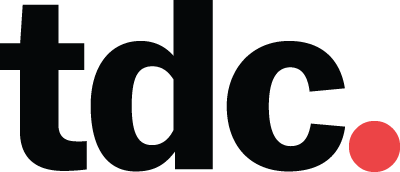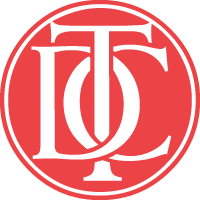The Man Behind Font Bureau Steps to the Front
The Type Directors Club is pleased to award its 27th medal of excellence to David Berlow for his outstanding work as a type designer and for his role in co-founding Font Bureau and leading it to its present position of eminence within the type industry.
David Berlow is one of the unsung stars of the digital type firmament. He began his typographic career at Mergenthaler Linotype in 1978, after graduating from the University of Wisconsin, at a time when the company had left its longtime Brooklyn home but had yet to be absorbed by its German sibling. There he worked in the Letter Drawing Office on West 34th Street under the supervision of Cherie Cone. The Director of Typographic Development at the time was Mike Parker and the company’s star designer was Matthew Carter, who had just completed Bell Centennial and was immersed in the design of what would later become ITC Galliard.
Three years later, seeing the coming digital typographic revolution, Parker, Carter, Cone and Rob Friedman fled Mergenthaler to form Bitstream in Cambridge, Massachusetts. Berlow joined them in 1982. He remained with Bitstream until 1989 when he partnered with Roger Black, publication consultant and former art director of Rolling Stone, to found Font Bureau. The two were a perfect match. Black incorporated custom typefaces as part of his proposed magazine and newspaper redesigns and Berlow and his staff at Font Bureau provided them. Of Font Bureau’s longtime specialization in custom fonts, Berlow has remarked, “That way we can be sure that someone will use them.” The arrangement has benefited everyone: Black, his clients, and Font Bureau.
Berlow’s first type design for Font Bureau was Belizio, a digital revival of Aldo Novarese’s Egizio, one of Black’s favorite faces from his days at Rolling Stone. Its design helped launch the new company and set the template for its subsequent existence. Since then Berlow has designed many other custom faces with the assistance of the company’s staff. In 1989 he updated and expanded Morris Fuller Benton’s Eagle (1933) and Empire (1937) for Publish magazine; adapted Benton’s Cheltenham Bold Extra Condensed (1906) for newspaper use; and in 1990 updated some of Lucian Bernhard’s 1920s types as Belucian for Smart magazine. Berlow’s typographic tastes were already fully formed.
- Belizio Medium and Black Italic
Over the years, Berlow has frequently turned for inspiration to American Type Founders, especially the designs of Benton and Bernhard, and British foundries Vincent Figgins and Stephenson Blake. His best—and best known—designs are rooted in the slab serifs and sans serifs (whether grotesques or gothic) of the 19th century and early 20th century. The first group includes Belizio and the impressive Giza (1994). The second, much larger group, counts among its members the influential Bureau Grot (formerly Bureau Grotesque; 1989–2006), Rhode (1997), Poynter Agate (1997–2008), Agency FB (1990–1995), Titling Gothic FB (2005) and a fully revamped ITC Franklin Gothic (2008). Clearly, Berlow has a liking for typefaces that exude a no-nonsense attitude. His preferences make perfect sense for a company whose core business is creating custom fonts for publications.
Berlow, and by extension Font Bureau, has always been focused on the functional aspect of type, so it is no surprise that he and the company have been leaders in the creation of subtle variations of typefaces geared to take into account the vagaries of paper and printing presses. They have pioneered the concept of “graded” typefaces for newspapers and magazines and, with the punning Reading Edge series, maximized the readability of small sizes of type on screen. Berlow’s Poynter Agate is the sans serif counterpart to Poynter Text, the first typeface in this series. Both were designed for the The Poynter Institute for Media Studies in Florida.
Berlow’s fascination with the functionality of type has led him beyond the printed page to significant work with screen fonts, beginning with his design for Apple of Charcoal, an update of the classic Chicago font for use with Macintosh OS8 in 1997 that was later revived for the iPod. For the Palm Pre he designed both Prelude (2009) and Apres (2010). (Beyond these, Berlow designed several core fonts for Apple (e.g. Gadget ) and, at the request of the late Robert Norton, a set of Art Nouveau TrueType fonts [e.g. Desdemona and Gradl] for Microsoft.) His work with system fonts provided the foundation for the launch of Webtype, Font Bureau’s recent foray into webfonts.
Despite the large number of typeface designs to his credit, and the popularity of Giza, Bureau Grot and ITC Franklin Gothic, Berlow does not have a very high profile. Many of his designs have been custom work and have been carried out in collaboration with others at Font Bureau. As a consequence, Berlow has not promoted himself. Instead, he has valued the notion that much contemporary type design is a group effort and has focused on building the Font Bureau brand. In this respect, Berlow is very much like his hero Morris Fuller Benton of ATF, who despite his prolific output, went out of his way to avoid publicity.
Berlow’s importance within the typographic community goes beyond the typefaces he has designed. His role as the President of Font Bureau is arguably of greater significance. In that capacity he has overseen the development of many more fonts than those that directly bear his mark, fostered new talent (including a notable number of women)—Tobias Frere-Jones, Jane Patterson, Matthew Butterick, Jill Pichotta, Cyrus Highsmith, Christian Schwartz, David Jonathan Ross and Dyana Weissman—and positioned Font Bureau as the leader in font design for magazines and newspapers. Font Bureau was one of the first digital type foundries to emerge in the 1980s. Today the size of its library (just under 2000 fonts) is only surpassed by those of Monotype, Adobe and FontFont. The foundry’s focus on custom fonts as the source for a large portion of its retail fonts has proven to be a successful business model, one that other small foundries have since emulated. Its Webtype business has been at the forefront of web font service revolution.
Finally, it should be noted that Berlow helped develop Robofont, a critical tool for type design today. His work in this area is one more aspect of his behind-the-scenes influence on contemporary type design.
Watch a video about David Berlow here.
Following is a chronological list of David Berlow’s type designs.*
1989
Belizio
Bureau Groteque (since renamed Bureau Grot)
Cheltenham FB
Eagle
Empire
1990
Agency FB
Belucian
Numskill
Phaistos
Romeo
Village, Town and City Ornaments
1992
Augsburger
Desdemona
Edda
Gradl
Harrington
Skyline
1993
Scotch FB
fonts for eworld and Prodigy
1994
Berlin Sans
Californian FB
Giza
Meyer Two
Vibration Gothic
Village
1995
Moderno FB
Old Modern
Sand
Throhand
1997
Bureau Roman
Charcoal
Eldorado
Poynter Agate
Rhode
Techno
1998
Gadget
Letras Oldstyle
2005
Titling Gothic FB
Truth FB (redesigned version of Charcoal)
2007
Latin FB
Kis FB
Vonness
2008
Hutch
ITC Franklin Gothic definitive version
Trib Century
2009
Juliana
Prelude
2010
Apres
The Reading Edge fonts: Apres RE, Benton Modern RE, Benton Sans RE, Giza RE
2011
Verdana Pro
2012
FB Didot for Web (Vogue)
2014
Custer
*Many of these designs were done in collaboration with others or were subsequently extended by others.
—Paul Shaw






